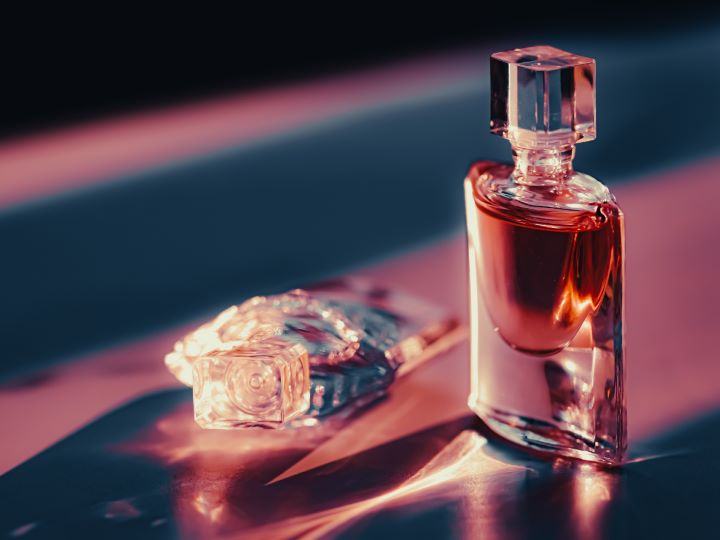Does Price Define Quality?
Perfume is more than just a fragrance; it is an expression of personality, mood, and style. Whether you're drawn to luxurious scents or affordable options, the world of perfumery offers something for everyone. But what truly sets luxury perfumes apart from their budget-friendly counterparts? Is a higher price always synonymous with better quality? In this article, we will explore the key differences between luxury and affordable perfumes, helping you make an informed choice based on your preferences and budget.
1. Ingredients & Concentration Levels (EDP vs. EDT vs. Parfum)
One of the primary distinctions between luxury and affordable perfumes lies in their ingredients and concentration levels.
-
Luxury Perfumes: These often contain rare and high-quality natural ingredients such as real oud, ambergris, sandalwood, and jasmine. The extraction process for these ingredients is costly and time-consuming, contributing to the high price of luxury fragrances.
-
Affordable Perfumes: Many budget-friendly perfumes use synthetic alternatives to mimic the scent of expensive natural ingredients. While these synthetic elements may not have the same depth and complexity, advancements in fragrance technology have made them highly effective and long-lasting.
In addition to ingredient quality, perfume concentration significantly impacts price:
-
Parfum (Extrait de Parfum): Highest concentration (20-40%), longest-lasting (8-12+ hours), and most expensive.
-
Eau de Parfum (EDP): Moderate to high concentration (15-20%), lasting 6-8 hours, offering a balance of longevity and affordability.
-
Eau de Toilette (EDT): Lighter concentration (5-15%), lasts 3-6 hours, more affordable than EDP.
-
Eau de Cologne (EDC): Lowest concentration (2-5%), refreshing but fades quickly.
Luxury brands typically offer Parfum or EDP for a rich and long-lasting experience, whereas budget perfumes often focus on EDT and EDC, which are lighter but more accessible.
2. The Role of Brand & Packaging in Pricing
Brand reputation and packaging aesthetics play a crucial role in determining the cost of a perfume.
-
Luxury Brands: Established names like Chanel, Dior, Tom Ford, and Creed invest heavily in branding, celebrity endorsements, and marketing campaigns. These brands often have a rich history, adding to their exclusivity.
-
Affordable Brands: Budget-friendly perfumes from brands like Zara, Bath & Body Works, and Pendora rely on mass production and cost-effective marketing strategies to keep prices low.
The packaging is another differentiator:
-
High-end perfumes come in elegantly crafted glass bottles with intricate detailing, magnetic caps, and artistic designs.
-
Affordable options may have simpler packaging, often using lightweight plastic or less durable materials.
Luxury perfumes offer an experience beyond just scent, while affordable perfumes prioritize accessibility and practicality.
3. Longevity & Projection: Is Expensive Always Better?
Longevity and projection (how far the scent travels) are essential factors when choosing a perfume. Many assume that expensive perfumes always last longer, but this is not always the case.
-
Luxury Perfumes: Due to higher concentrations of essential oils and superior fixatives, luxury perfumes generally last longer and project better. Natural ingredients like oud and musk enhance longevity.
-
Affordable Perfumes: These may fade faster due to a higher alcohol content and synthetic ingredients. However, some budget-friendly options, especially EDP versions, offer excellent longevity.
That said, longevity varies depending on skin type, application, and environmental factors. Some affordable perfumes, like Lattafa Khamrah or Armaf Club de Nuit, are known to rival high-end brands in longevity and projection.
4. Best Luxury Perfumes Worth the Investment
If you’re looking to invest in a premium fragrance, here are some iconic luxury perfumes known for their quality and sophistication:
-
Creed Aventus – A bold and confident scent with fruity and smoky notes.
-
Maison Francis Kurkdjian Baccarat Rouge 540 – A luxurious blend of saffron, amberwood, and jasmine.
-
Tom Ford Oud Wood – A rich, woody scent with oud, vanilla, and spices.
-
Dior Sauvage Elixir – A refined and intense version of the classic Sauvage.
-
Chanel No. 5 – Timeless floral aldehyde fragrance, iconic in the perfume world.
Luxury perfumes are ideal for those who appreciate fine craftsmanship, unique scents, and long-lasting performance.
5. High-Quality Budget Perfumes That Impress
Not everyone wants to splurge on luxury perfumes, and luckily, there are many affordable options that offer impressive quality:
-
Armaf Club de Nuit Intense Man – A fantastic dupe for Creed Aventus at a fraction of the price.
-
Lattafa Khamrah – A long-lasting spicy gourmand scent reminiscent of Kilian Angel’s Share.
-
Zara Vibrant Leather – A great everyday fragrance with fresh citrus and woody undertones.
-
Bath & Body Works Into the Night – A budget-friendly yet long-lasting feminine scent.
-
Pendora Scents Aventura – A well-balanced and strong scent inspired by designer brands.
Affordable perfumes allow fragrance lovers to enjoy variety without breaking the bank.
Final Words: How to Choose Based on Preference & Budget
When deciding between luxury and affordable perfumes, consider your budget, scent preferences, longevity needs, and brand loyalty. If you seek exclusivity, top-tier ingredients, and elegant packaging, luxury perfumes are a worthwhile investment. However, if you want versatility and affordability without compromising on scent quality, many budget-friendly perfumes deliver outstanding performance.
Ultimately, the best perfume is the one that makes you feel confident and suits your lifestyle, whether it comes from a high-end boutique or a budget-friendly retailer. Choose wisely and enjoy the journey of discovering your signature scent!


